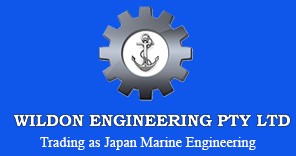The Role of Turbo Chargers in Yanmar Marine Diesel Engines
Blog | August 17th, 2018
At its core, a marine turbocharger is an integral part of a Yanmar marine diesel engine. The prestigious engine brand is clearly designed to excel in its boat propelling duties, but that ability to excel will fall short without this vital drive component. It’s the turbo that ensures the diesel ignition cycle is provided with plenty of air. Then, with the air-fuel mix set just-so, a boat equipped with this tech is free to skip speedily over the water.
A Turbocharger Review
Call it a primer or a review, just know that we can’t go any further until we’re familiar with the fundamentals of turbocharger technology. In a Yanmar marine engine, the assembled engine section breaks down into three primary systems. There’s a compressor wheel, a turbine rotor, and the device architecture concludes with a series of bearings. An air inlet/gas exhaust out aperture runs through the assembly. It’s here that the engine exhaust gases are pulled in and transformed into supplemental mechanical energy. If we were to follow the gas exhaust, perhaps by somehow colouring the vaporous discharge, we’d see the compressor wheel spin, the turbine rotor responding in kind, and a large volume of pressurized air flowing straight to the air-fuel mixing chamber. Compressed air and diesel fuel now augment the engine’s ignition cycle and provide augmented propulsion energy. Essentially, the turbocharger, tightly embedded within a Yanmar marine engine, is taking advantage of the gas exhaust. It’s using the gas to further “turbo” power the engine.
Faster but More Efficient Cruising
There’s additional thrust force at the command of the ship’s navigator, yet fuel efficiency has gone up, not down. That’s because there’s more air entering the engine manifold. Not only is there more air speeding into each engine cylinder, the volume of that ignition-facilitating medium has multiplied, and that increase is there as a direct result of the turbocharger’s gas exhaust compression mechanism. Power output is optimized, fuel efficiency is high, and the boat is much more responsive. For this degree of augmented performance, Yanmar engineers use forged steel components, plus groups of highly specced thrust bearings.
The principle is familiar; Countless diesel engines use the component architecture as a performance augmenting asset. However, Yanmar engineers have pushed the principle hard. Engine efficiency increases and overall boat responsiveness are the upshot, all thanks to an architecture and durable build that prizes quality over quantity. Uniquely capable, Yanmar turbochargers use heavy-duty thrust collars and thrust bearings to manage the compressive forces as they’re funnelled towards the discharge stage. From here, the perfectly balanced fuel mix assures a fast, responsive, and reliable ignition sequence.
Optimized by NetwizardSEO.com.au
Recent Posts
- Turbochargers Supply from Japan Marine: Wildon Engineering’s Excellence in Global Shipping
- Mitsubishi VOS Ballast Water Treatment System: Next-Generation Marine Environmental Solutions
- Yanmar Marine Compressors: Reliable Power Systems for Commercial Vessels
- Water-Lubricated Stern Tube Bearings Explained: How EVR Technology Supports Marine Propulsion
- YANMAR Auxiliary Generator Engine Parts for Commercial Vessels
- Fluid Control Systems: Innovations in Marine Applications
- Yanmar Diesel Generators Australian Distributor: Power for Shipping & Marine Operations
- Navigation & Communication Equipment: Essential Tools for Safe Voyages
- Stern Tube Seals: Preventing Leaks & Maintaining Vessel Integrity
- Innovative Cathodic Protection Technologies for Maritime Industries
